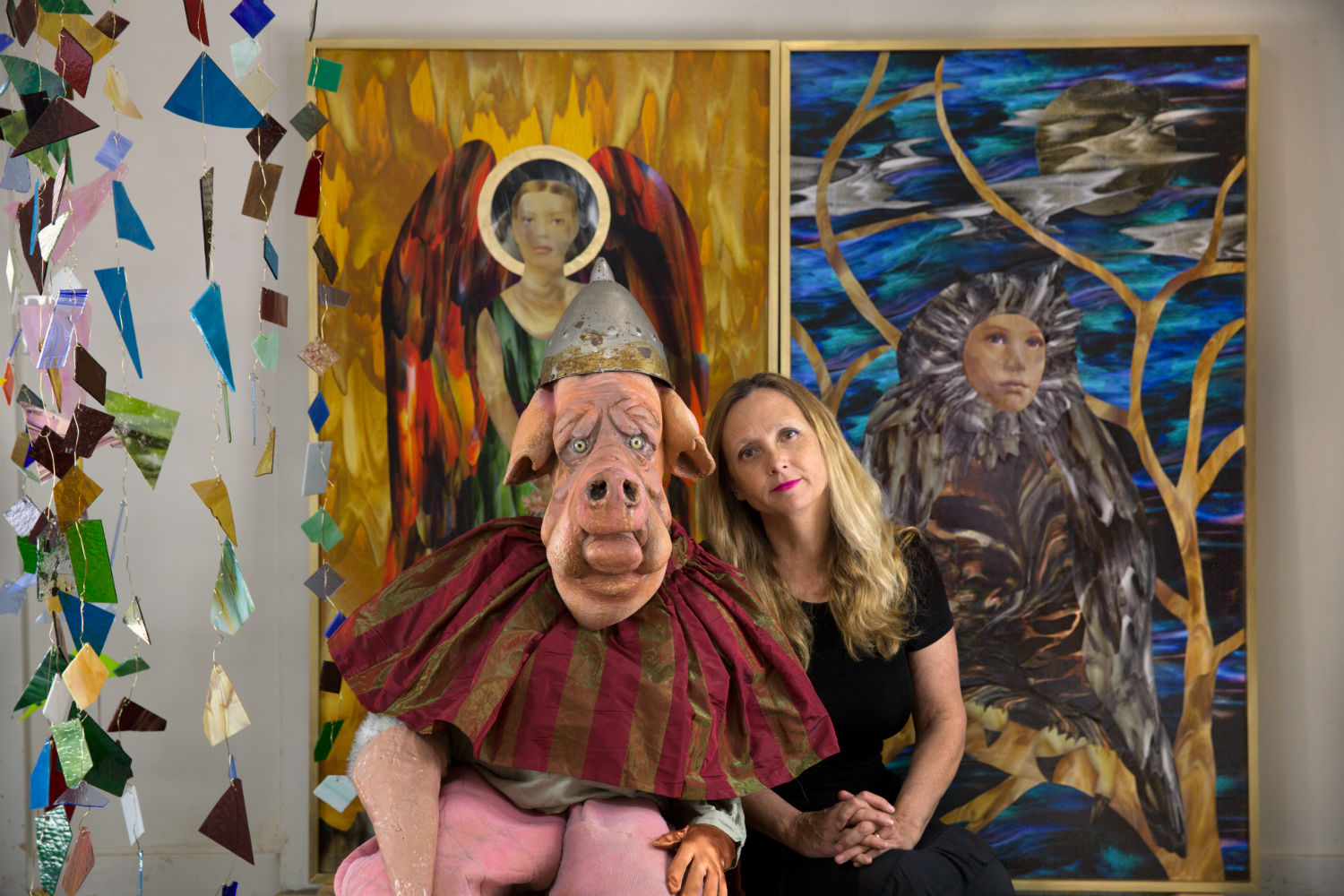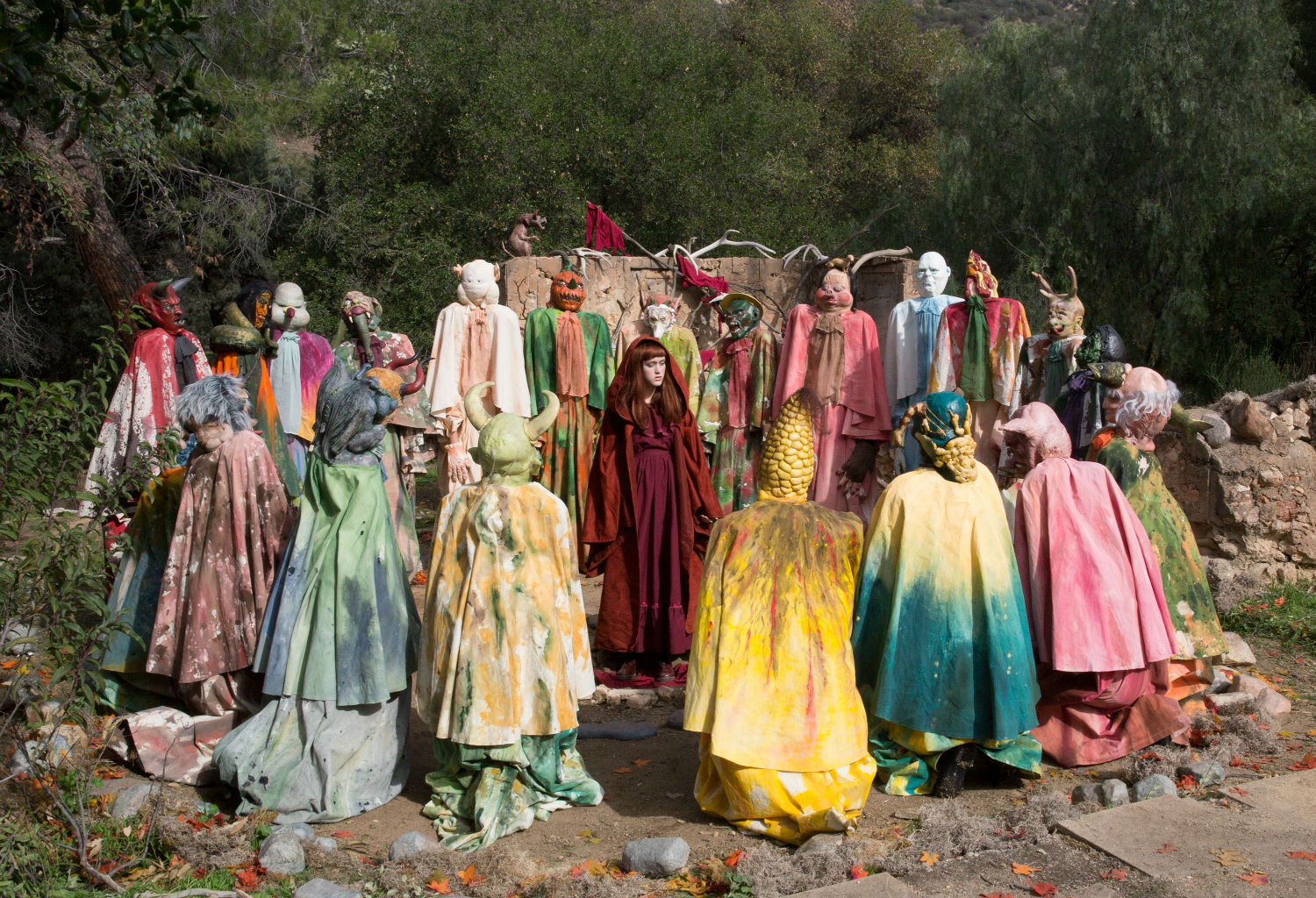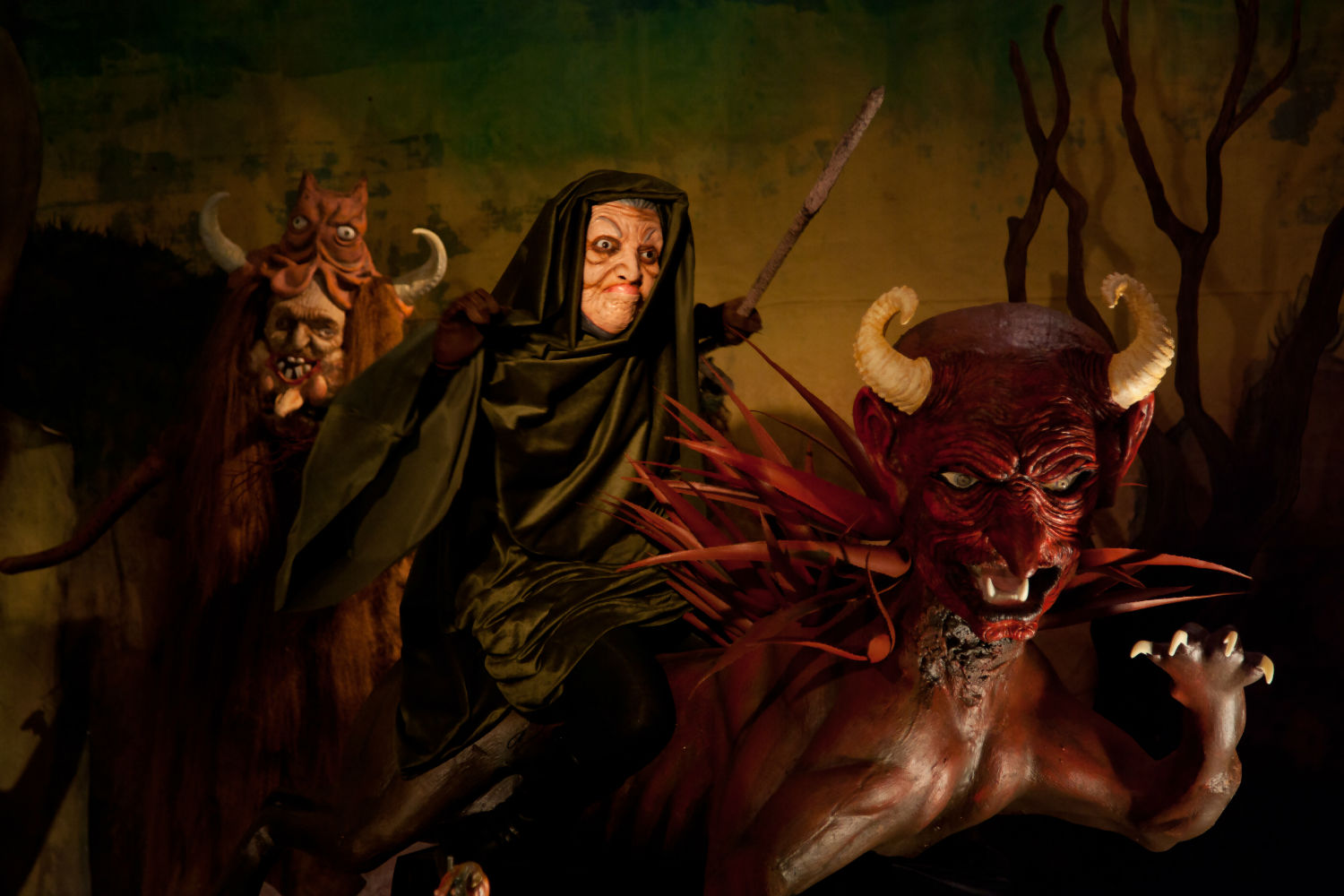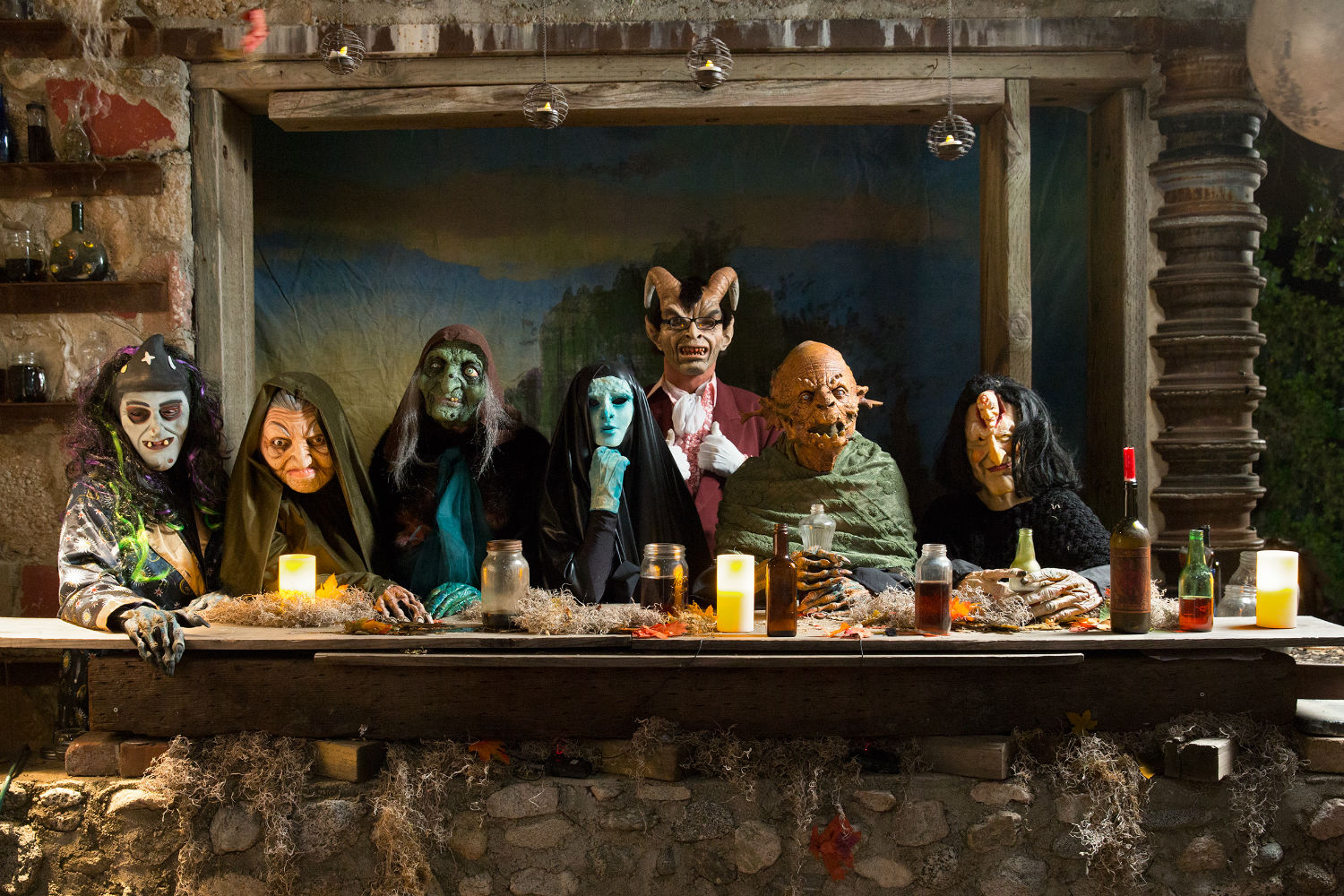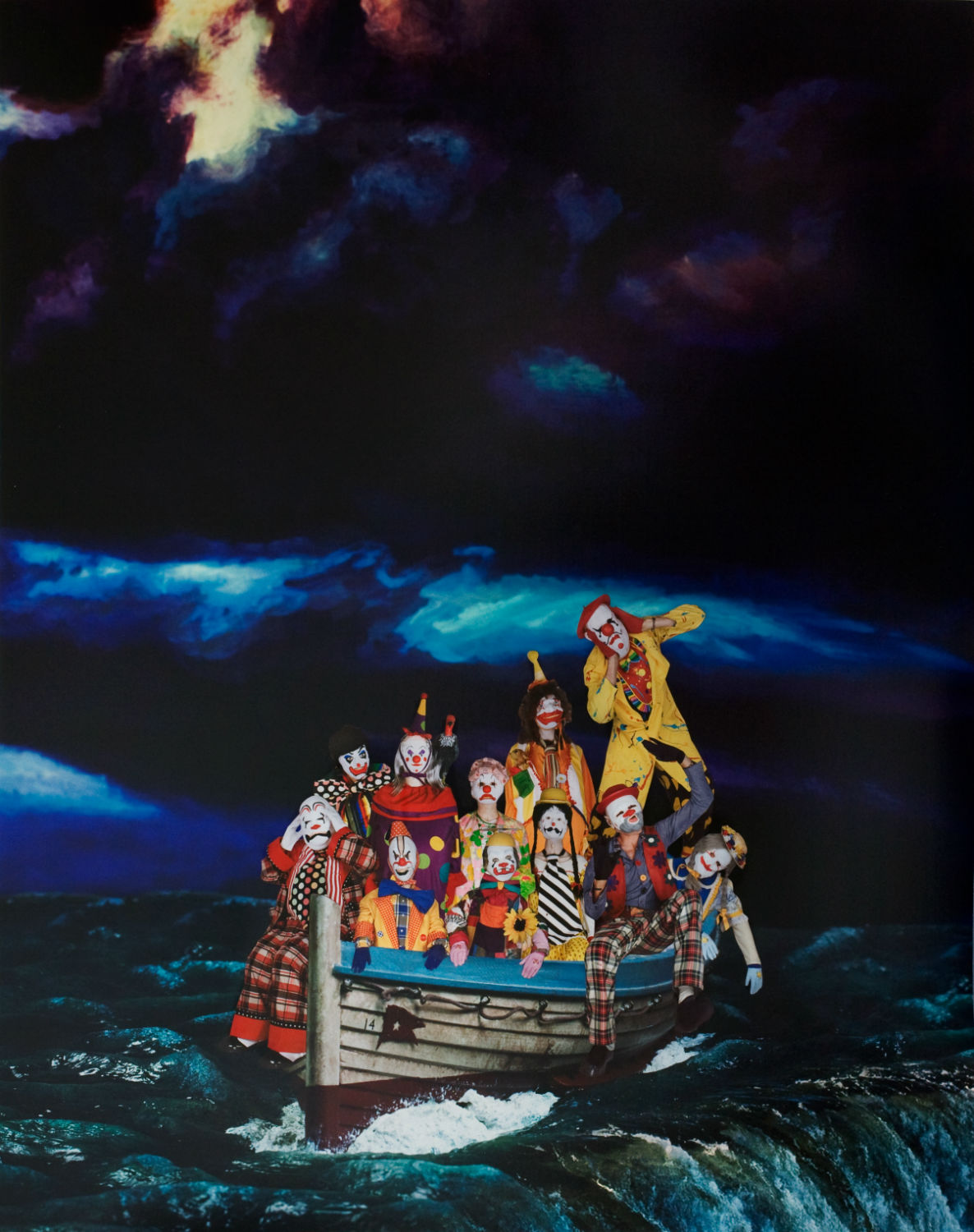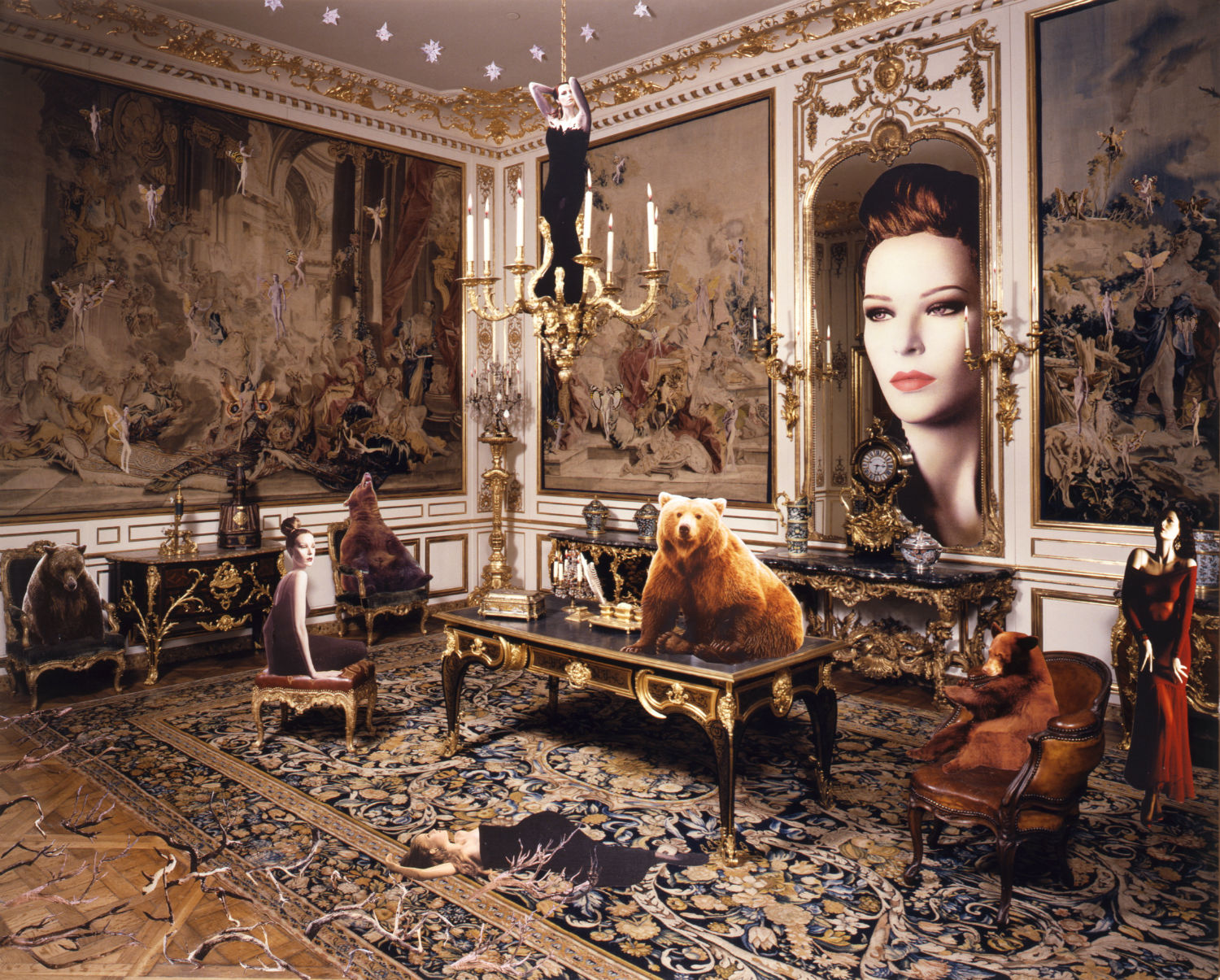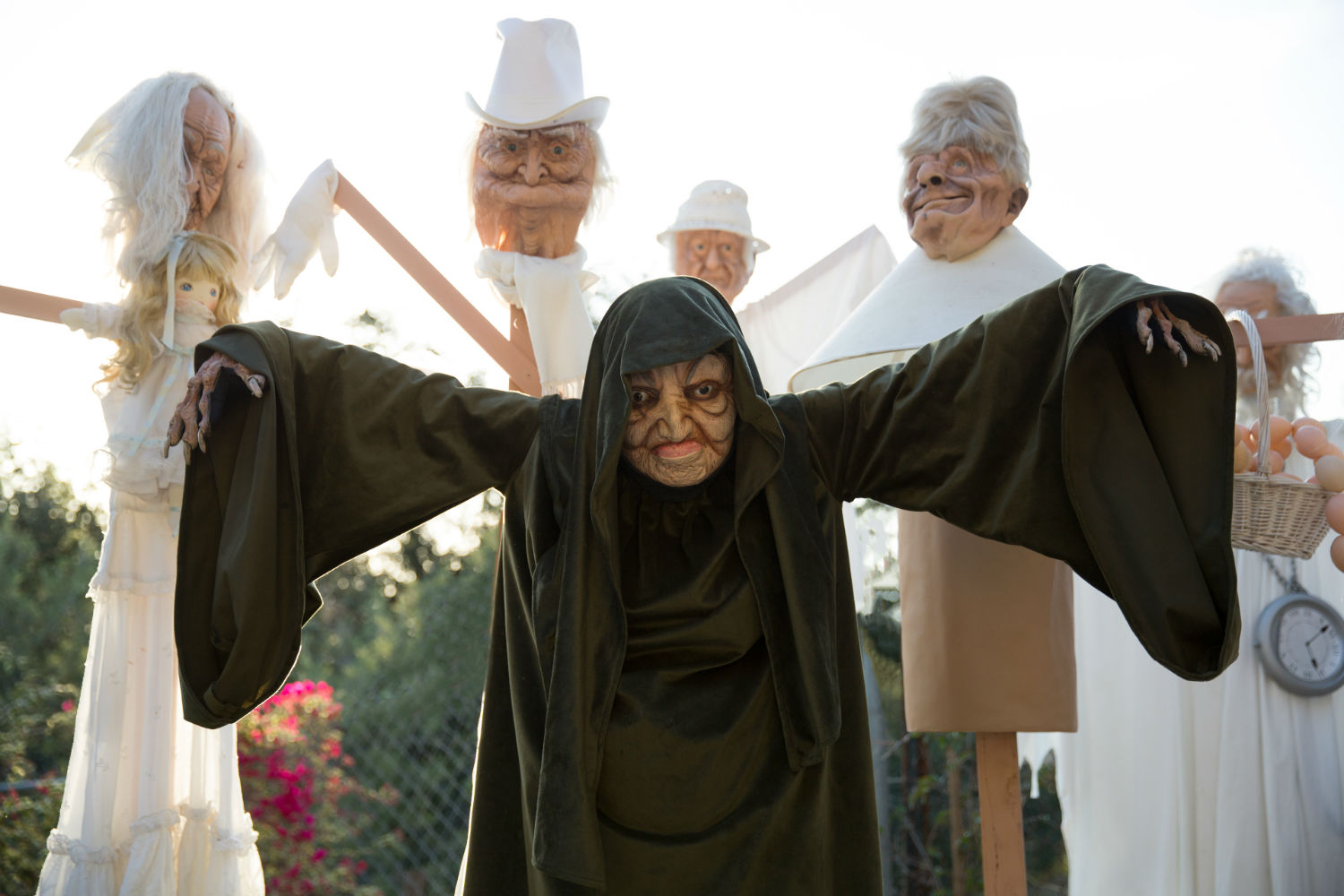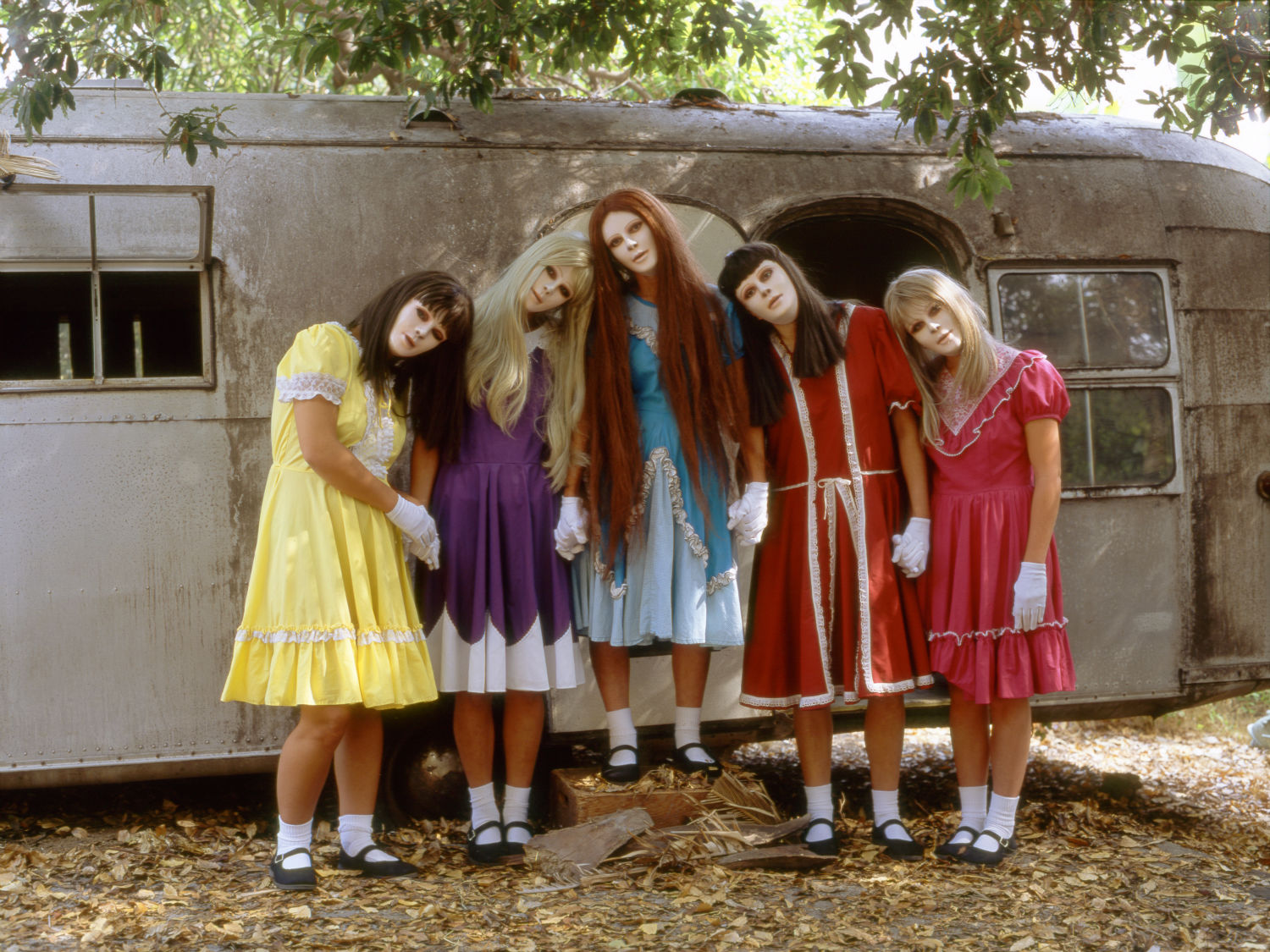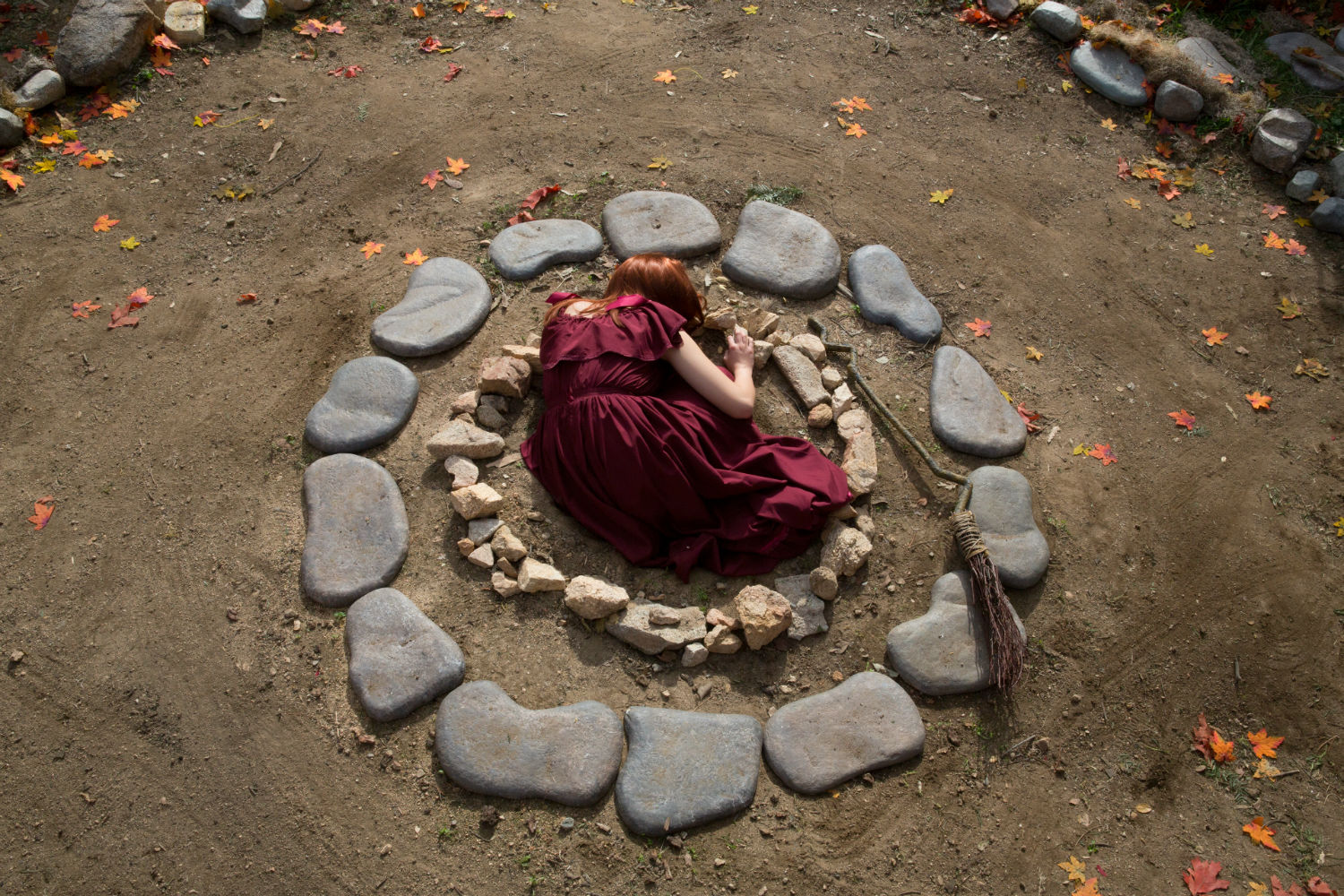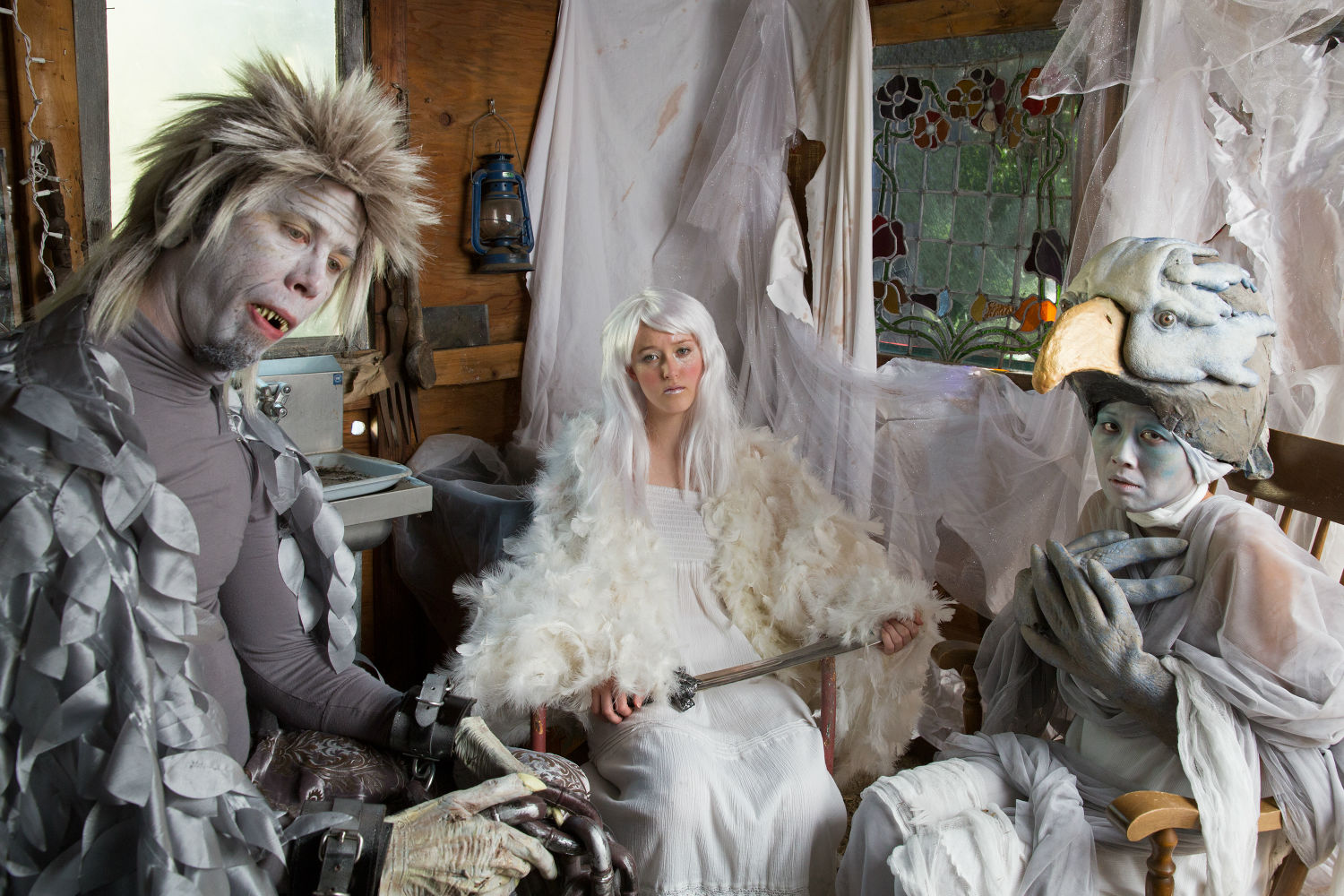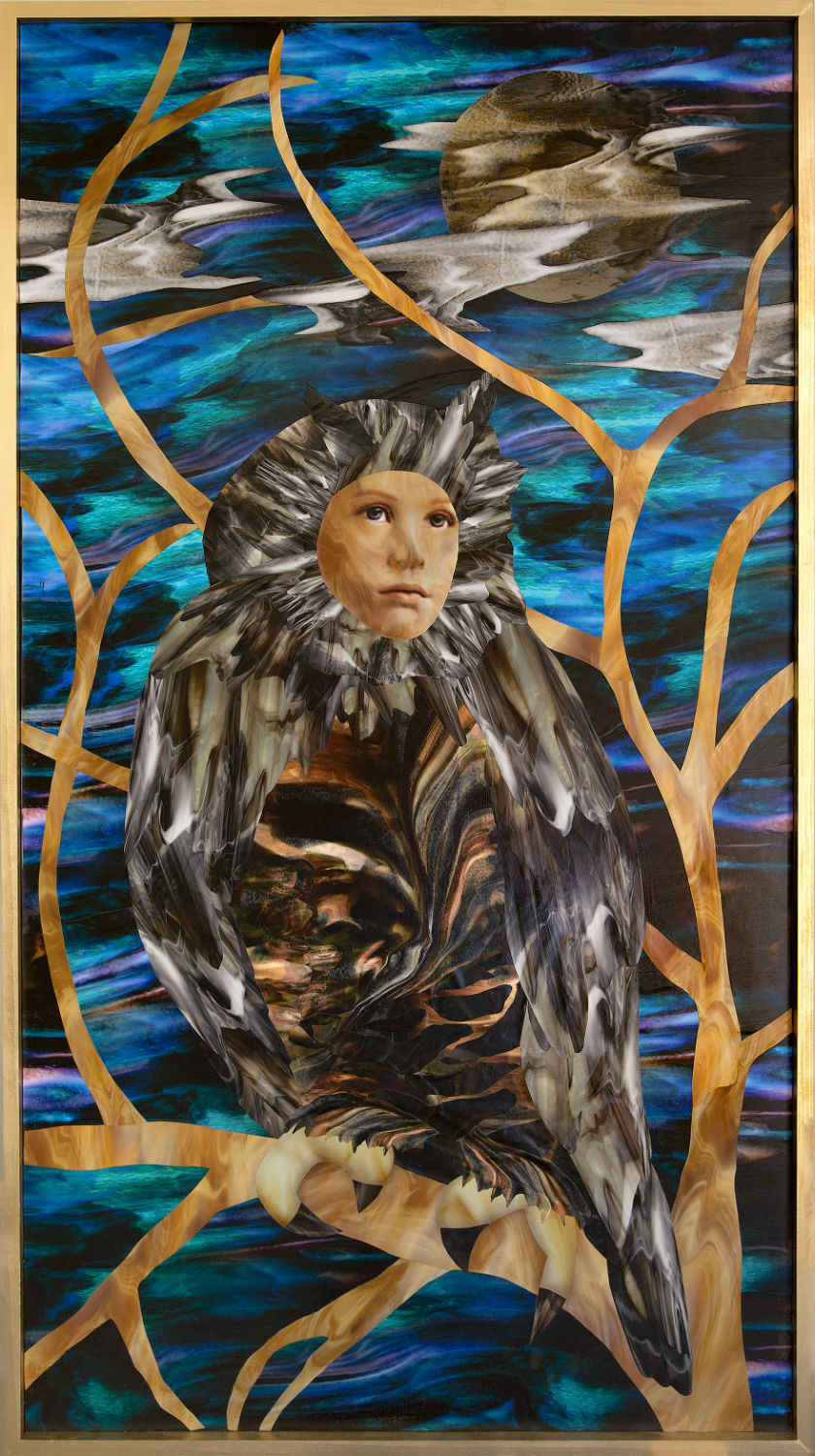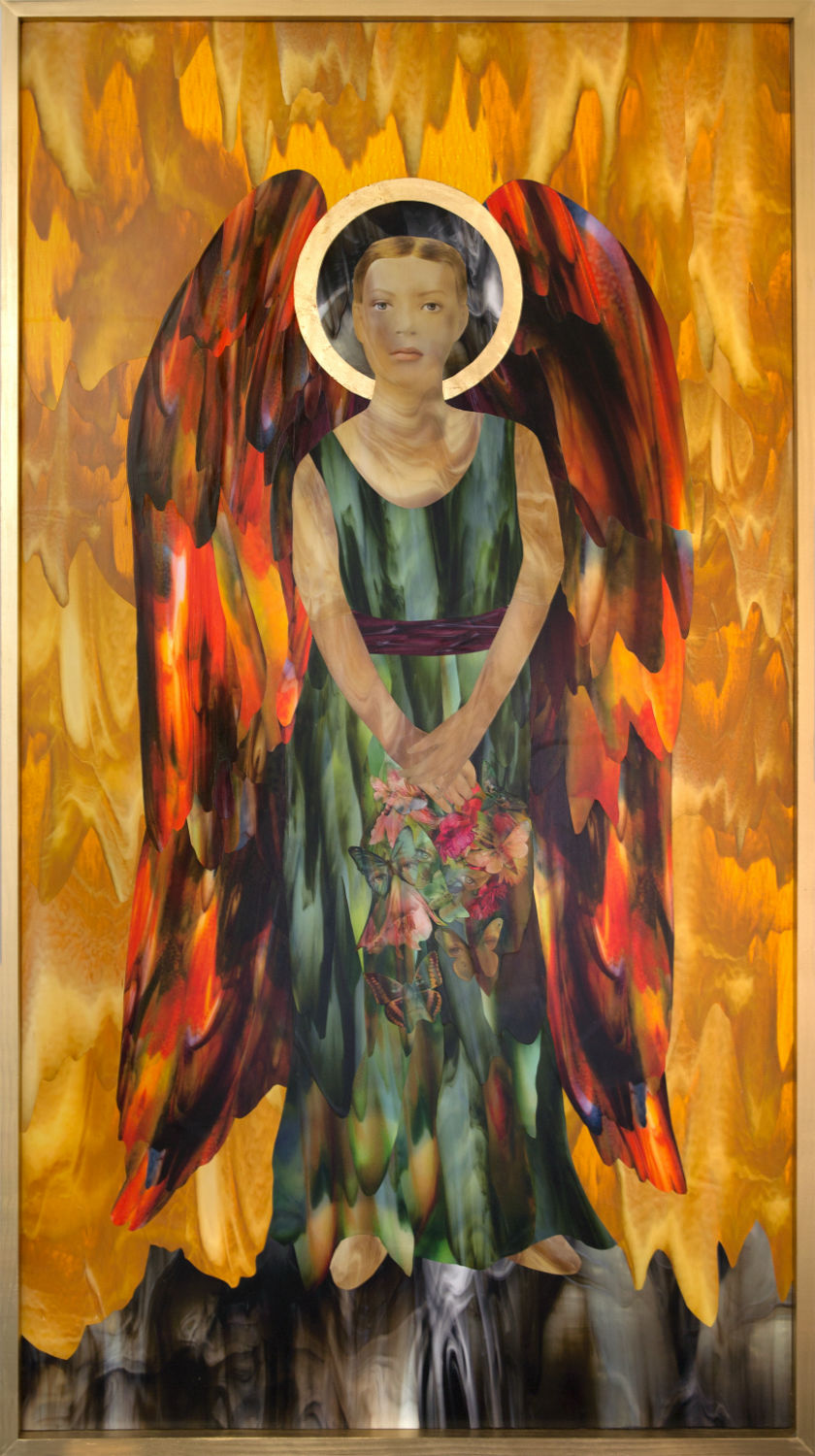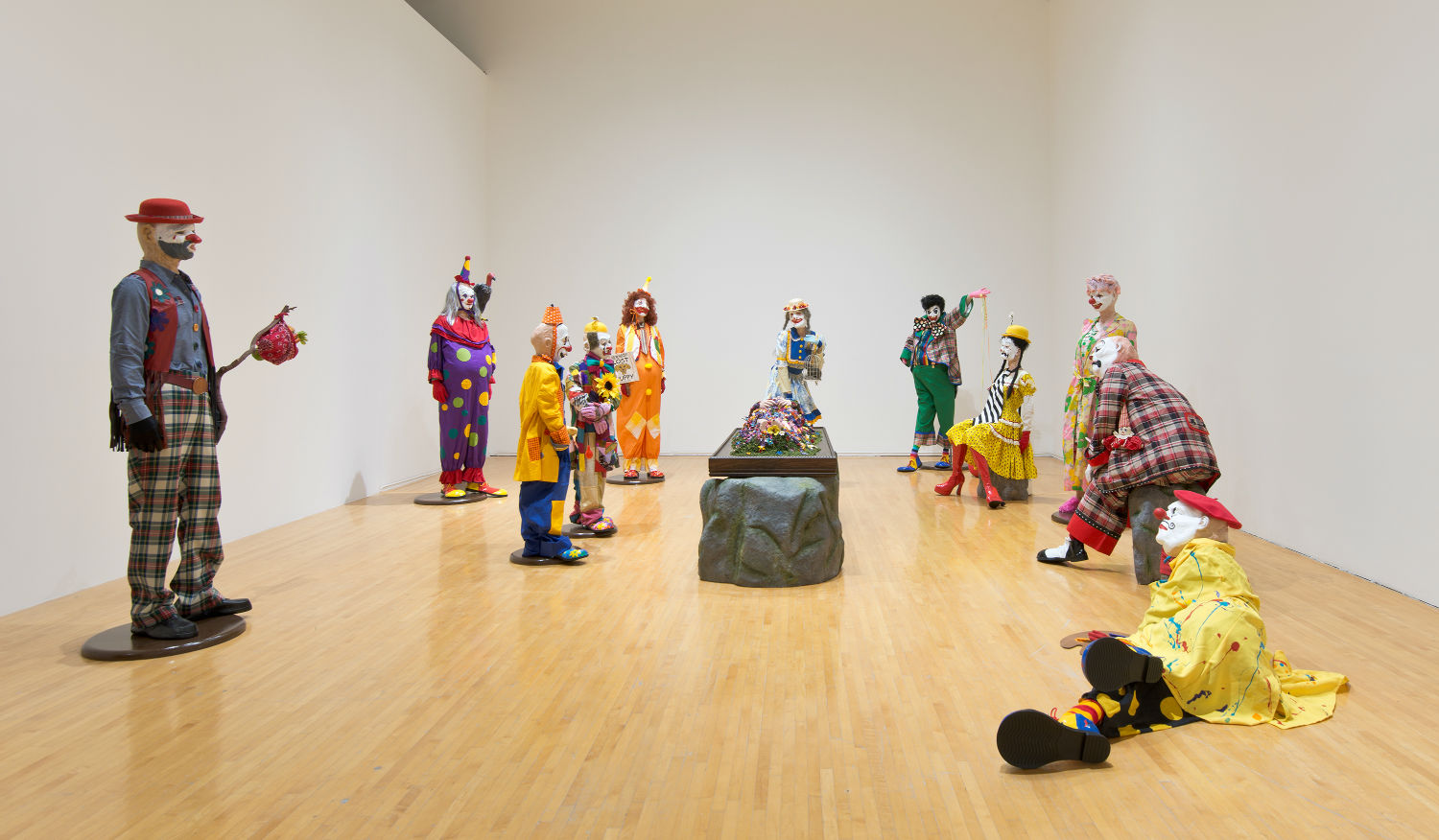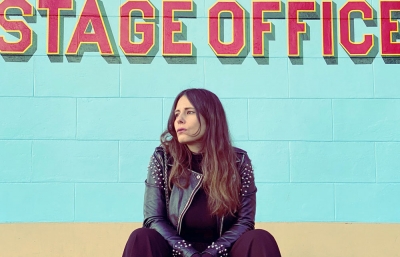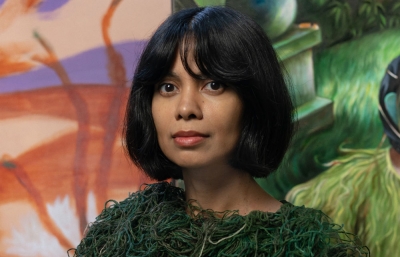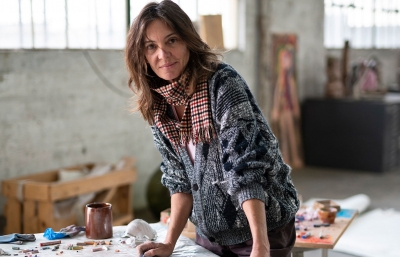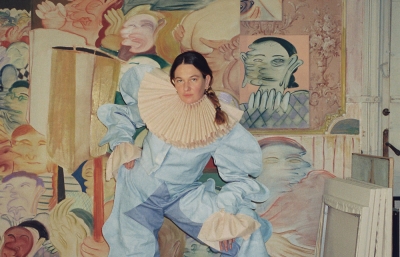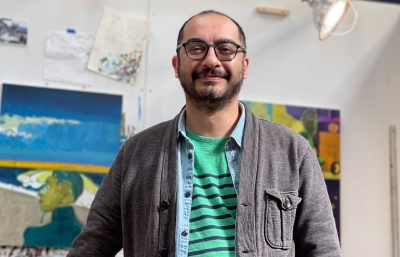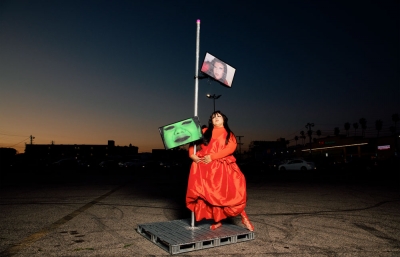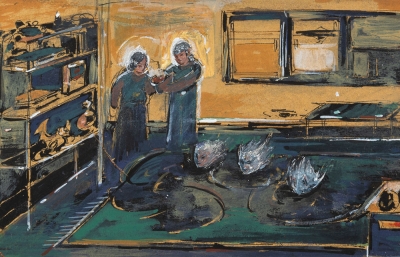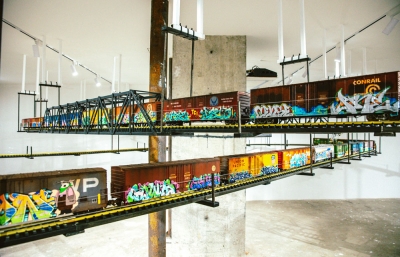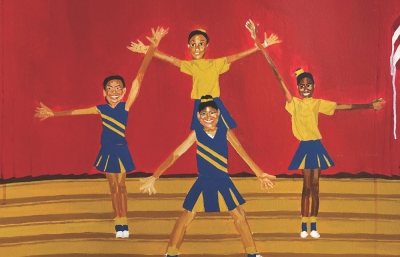It’s a bit of a struggle to analyze the meaning behind the work of Marnie Weber. But then, that might be the point—there is no concrete explanation. Her work is full of dazzlingly profound imagery, teetering on the brink of reality and fantasy. She has created her own world in which the viewers are invited into that void, where at times, they can lose themselves in the mystery of the subconscious.
Weber and her husband, artist Jim Shaw, have been notable fixtures around the Los Angeles art scene for decades. Both continue to influence younger artists with their whimsical, original visions. I recently dropped in to visit Weber at her home studio, perched in the hills of Highland Park overlooking downtown LA. We discussed her upcoming film, The Day of Forevermore—her first feature-length effort—which will be accompanied by a new gallery installation.
Read the entire interview in the October 2016 issue of Juxtapoz Magazine, on newsstands worldwide and in our web store.
Gregg Gibbs: You started out as a member of the seminal punk band, Party Boys. Can you describe the early days of the downtown art scene in Los Angeles when there was a cultural explosion going on in the city?
Marnie Weber: The band actually started in 1979. We lived together for six years in different downtown studios, and we would play the corner bar every weekend. It was a Mexican bar full of truckers and transients. We branched out from there and played lots of clubs around town, eventually landing in New York and London. There couldn’t have been more than 20 artists living downtown during that time, so the early days were very DIY. I learned a lot from being in a band. I learned that you don’t wait around for someone to give you a chance, you just go ahead and do it for yourself. Party Boys put out three albums, then we decided to go our separate ways to pursue other things.
After the band broke up, I wasn’t sure what to do. I had a degree in art, and I was making collages. During that time, performance art was the big thing, so I went into that. It was a big deal for me to be on stage alone. I wanted anything to take attention away from me, so I started making short films. I was dressing up in costumes and using projections and creating characters to further distance myself from the attention of the audience. In time, I realized that these films held their own and didn’t need to be part of a live show.

Where do your images come from? They seem to be very dreamlike and ethereal. Is this what your dreams or nightmares look like?
They just come from my head. I don’t literally get them from my dreams, because my real dreams are kind of boring. Filmmaking to me is the closest thing to dreams coming out of the subconscious. When I make a film, I do storyboards and a synopsis, and then when I’m shooting, I just go with the flow and see what happens. Just like with dreams, I later interpret what it’s about. I’ve had some pretty uncanny, strange experiences viewing films afterwards when I feel like my subconscious is speaking to me.
Are you attempting to develop your own mythology?
Yes. I do think it is my own mythology. I never draw upon other people’s fairy tales. I think the Brothers Grimm did a good enough job with that. I only want to tell my own fairy tales. In the telling of them, you derive the meaning. Sometimes you get too caught up in the symbolism and too caught up in your brain. It’s better to make the film and then later figure out what it means.
How did you develop your work with collage, as well as your process?
In art school, I was making these big collages. I was inspired by Greek mythology. I started making work about other mythologies until I started making my own. Collage is more than a dumping ground of imagery. You just don’t put things together that don’t make sense. As I got further into collage work, I realized that I wanted to create a psychological moment. I try to make it look like a freeze frame of a movie, or as if you had walked into a play and all of a sudden, the characters had stopped. Like you walked into a scene and said, “What’s going on here?” Now, my goal when I do a collage is to create an emotionally charged situation. I really believe that, over the years, I’ve found my voice.

Tell me about the cover art you did for the Sonic Youth record, A Thousand Leaves. I think I recognize you as the little girl in the collage.
Thurston and Kim saw my show of collages in New York and they contacted me and said, “We’d like you to do our next album cover.” They said the title was A Thousand Leaves, so in my mind, I kept thinking about trees and started sending them images with trees. They happened to get some slides from the gallery and chose the one used on the cover, which is a photo of me as a little girl. I was 12 years old and my family was living in Japan at the time. Some company was looking for a caucasian girl to model blankets. In every single picture, I’m not smiling and look terrified. In the collage, I added the hamster ears to my head.
Let’s talk about the characters you create. To the casual observer, your images are striking, and in some cases even shocking. Is there something about the grotesque that appeals to you?
It’s sort of a parallel world between beauty and the grotesque. I try to hit the mark right in between. The monsters started because I wasn’t seeing a lot of work with monsters by women. I thought it was sort of an untapped area, so I started to create a lot of them.
Music still continues to be an important component of your endeavors. I’m fascinated by your band, The Spirit Girls, after seeing you perform live. What is the underlying concept behind the music?
For six years, I did a series of work about a rock band called The Spirit Girls. I wanted to create a group of girls who died and came back to play music as spirits. My thought was that these girls should just have blank faces, so you can’t relate to their emotions or feelings. There are four Spirit Girl films, an album and many shows I’ve done, but it ends up becoming a big deal when I have to revive the band. Right now, I’m just playing noise music.
What led to your body of work dealing with clowns? I know lots of people who are terrified by them. Are you using this clown motif as way to tap into that fear?
Oh, no. I’ve always had this attraction to clowns. As a kid, for some reason, I’d run to a clown before a normal person. That’s just the way I am. I like all clowns: evil clowns, hobo clowns, lame clowns. When I was a little girl, I loved to watch Red Skelton as a clown on TV. My mother told me that I’d get right up to the screen and I’d say, “poor him,” and I’d cry, ’cause he always had empty pockets. So she’d have to turn off the TV. It’s kind of a release of pain to witness the humiliation of a clown. I got into hobo clowns when I found out that my grandmother would feed the hobos by the train track. Emmett Kelly was actually making a political statement as his hobo character, not only to make people laugh, but also to make people aware of the political situation at the time. I’m interested in clowns as a social statement.
Let’s talk about your recently completed feature-length film, The Day of Forevermore. What was the genesis of this project?
A few years ago, I did a 15-minute tableau vivant called The Night of Forevermore. I like the history of the tableau vivant, when people in the 1800s would dress up and pose in costume at society parties. I wanted to expand it and make a feature based on the original short. So I just plowed ahead to make a feature film. It took three years to make. My daughter Collette was 13 when she started playing the lead character, and she was 16 when we wrapped, though you can’t tell because of her wig and makeup. It still took three years less than David Lynch’s Eraserhead [laughing]. After we finished the short, Collette asked, “When are we gonna have some dialogue?” Keep in mind that I had made 21 movies without dialogue at this point, so I thought, “Whoa, I never even thought about that.” So I’m thinking okay, when we do the full feature, we’ll have dialogue.
Did you work with a screenplay?
Yeah, I had a 22-page script. I was trying to get around the idea of having a script, but Collette said, “You really have to have a script. Actors need scripts!” I knew there was a lot of internal work that actors need to do with a written page, so I buckled down and wrote a script. My procrastination kind of tore me down, but then I just did it.
Can you give me some details about the plot?
It’s a modern fairy tale. A daughter, Luna Crimson, struggles to find freedom from her imposing mother, an elderly, demented witch. They live together on this mysterious farm called Forevermore Acres, populated by aged witches and misfit monsters. The mother plans to indoctrinate her daughter into her coven of darkness. The daughter, yearning for life beyond the farm, may have a bit of the devil in her when called upon to take power.
In the beginning of the film, Luna wanders through this tableau vivant. She wakes from a dream in which she becomes the devil and this green succubus lands on her chest. It’s almost as if her mother, the old witch, is sucking out her soul because she wants her to take over the legacy of the family farm. In a monologue, the witch explains the situation: “This my daughter, Luna Crimson, and she dreams of being free. But I want her to take over the farm, because I’ve been doing it for 800 years, and I want to pass on my legacy so I can transition into the netherworld.“
What I like about the film is that it’s the antithesis of what you expect from a typical Hollywood monster movie. For instance, some of the character’s mouths don’t move, and it’s obviously a rubber mask. You’ve kind of shattered the artifice of creature effects.
I wanted it to be homegrown. At first, I thought hard about making the mouths move, but as time went on, I thought, “Well, maybe it’s better not to.” Almost like the witch, by living in her own monologue, doesn’t care what anyone else says. She only cares about herself. When her mouth doesn’t move, it’s almost like the audience is tapping into her subconscious.
There was a lot of decision making, but in the end, I wanted to make an art movie. I didn’t want to make a commercial indie film. To me, an independent film is something people would go see at festivals or movie theaters. It wouldn’t be something you would see in a museum or gallery. I think that an independent movie represents the conscious mind, where an art movie is more like the subconscious mind. I wanted it to be dream-like, more like visual poetry.
Tell me about your upcoming show at Gavlak Gallery in LA. What are your upcoming themes and concepts?
I was given an opportunity to have a solo show and I wanted it to correspond with the premiere of The Day of Forevermore. I thought about doing something related to the film. In the final scene, Luna finds a hole in the fence and she runs for freedom, and the pig character follows her. What would they come upon in that field? I thought they might discover a pagan chapel, something mysterious, somewhat religious, a religion of nature, maybe. So I created a destroyed-looking chapel to represent that. One thing led to another, and I started working with stained glass, and made weeping willow trees out of that stained glass. I also made a magical waterfall on video, and a soundscape of the weeping willow trees, which sound like wind chimes. The pig will be there, sitting on some rocks.
I’d like people to sit in the installation and have a meditative experience, sort of like nature’s spirit has anthropomorphized people and animals. It’s kind of witchy visionary stuff.

When you are working within a gallery space, an empty white-walled room, how do you approach it?
When I do an installation, my whole goal is to make people feel their breath is taken away when they enter, and to experience a real emotion. Like it’s a theatrical set. After all those years performing, I feel a strong connection to an audience. Maybe it sounds corny, but I want the audience to connect to the work with a psychological emotion.
You work in so many mediums—installation, painting, sculpture, video, costume-making, etc. What commonalities and distinctions do you see among these disciplines?
It’s all one thing. That was one of the inspirations from my friend, Mike Kelley. He was a performance-driven artist in the beginning and it showed up in his entire career of work. Many times you’d walk into one of his shows and not really be sure if the sculptures were props, so the line is very hazy. From the get-go, he was very influential to me.
Who are some other artists who have influenced you?
Well, my husband, Jim. Cindy Sherman, hands down, because of all the characters she’s done. Over the years, I’ve had to remind myself to try not to make my work look like a Cindy Sherman piece. I like Matthew Barney an awful lot. He has his own mythology and he’s making real art films. I get a lot of inspiration from outsider artists, like Henry Darger, whose Vivian Girls inspired The Spirit Girls. I really like outsider artists. There’s a naive sense of love that comes from people who make art because they can’t help it.
Marnie Weber’s exhibition, The Chapel of the Moon, is on view at Gavlak Gallery in Los Angeles, September 17–November 5, 2016.
----
Originally published in the October 2016 issue of Juxtapoz Magazine. Subscribe and get it for free.

